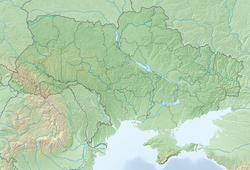Massacres
In December 1941, a few cases of typhus, which is a disease spread by lice and fleas, broke out in the camp. [1] A decision was made by the German adviser to the Romanian administration of the district, and the Romanian District Commissioner to murder all the inmates. The Aktion began on 21 December, and was carried out by Romanian soldiers, gendarmes, Ukrainian police, civilians from Golta, [2] and local ethnic Germans under the commander of the Ukrainian regular police, Kazachievici. [3] Thousands of disabled and ill inmates were forced into two locked stables, which were doused with kerosene and set ablaze, burning alive all those inside. Other inmates were led in groups to a ravine in a nearby forest and shot in their necks. The remaining Jews dug pits with their bare hands in the bitter cold, and packed them with frozen corpses. Thousands of Jews froze to death. A break was made for Christmas, but the killing resumed on 28 December. By 31 December, over 40,000 Jews had been killed. [4] Overall, at least 43,000-48,000, and perhaps as many as 54,000, Jews were killed in the Bogdanovka concentration camp. [5] [6] [7] [8] A large majority of the Jews who were killed were originally from Transnistria, but 7,000 or more were from Bessarabia. [9] Perhaps only 50 Jews who burned the bodies of the massacred Jews survived. [10]
This page is based on this
Wikipedia article Text is available under the
CC BY-SA 4.0 license; additional terms may apply.
Images, videos and audio are available under their respective licenses.


